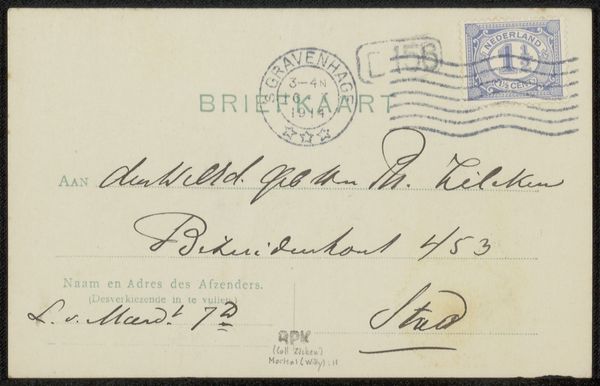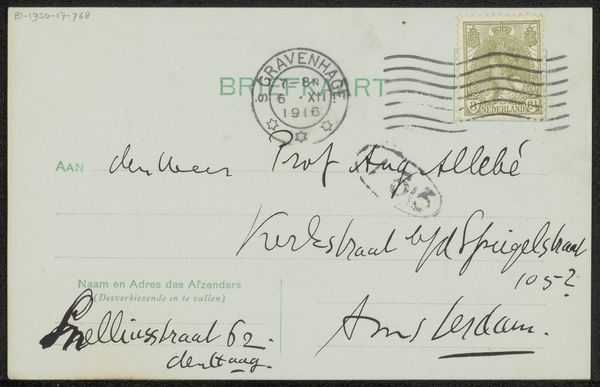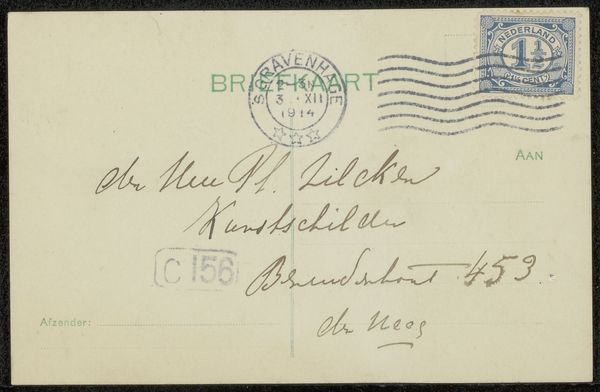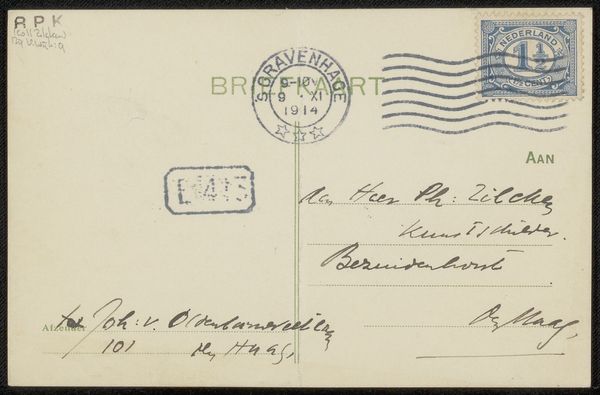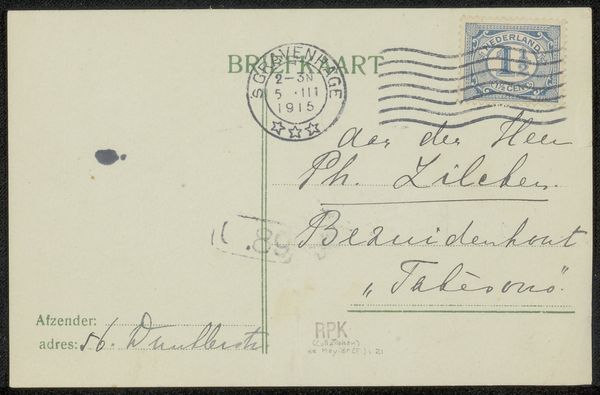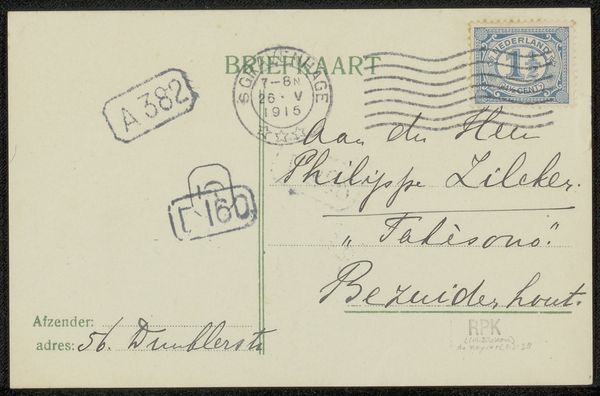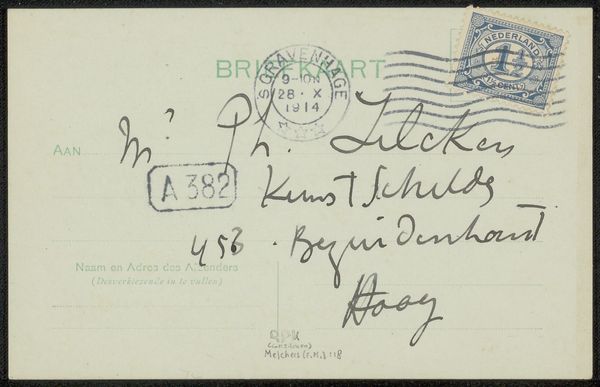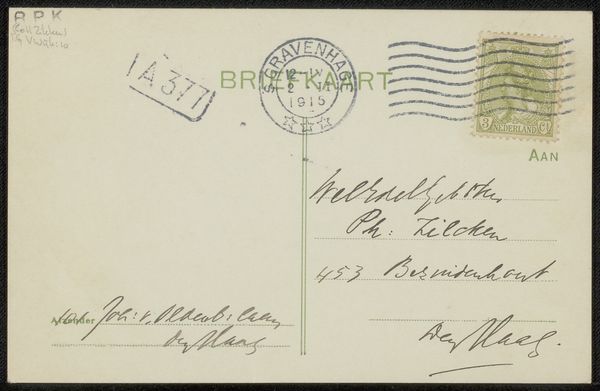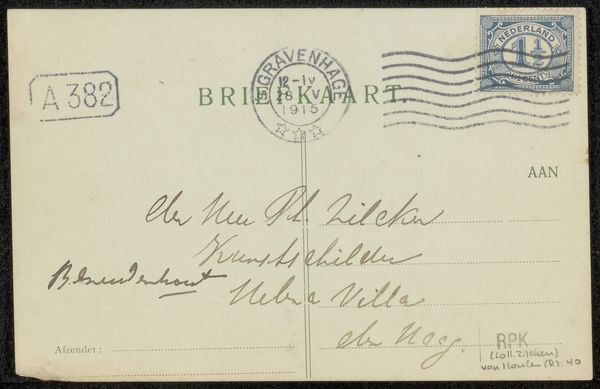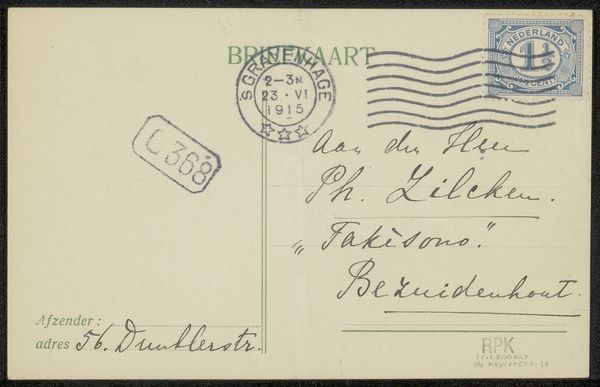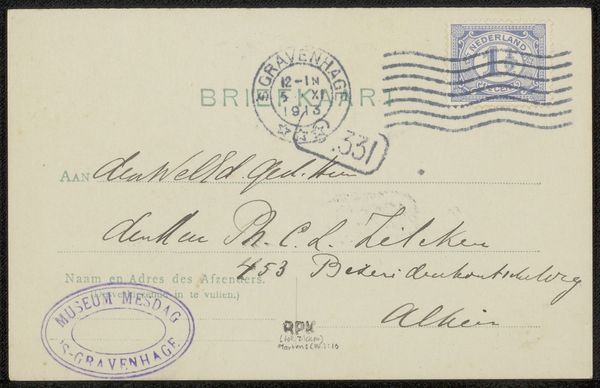
drawing, paper, ink
#
drawing
#
paper
#
ink
#
calligraphy
Copyright: Rijks Museum: Open Domain
Curator: "Briefkaart aan August Allebé", a postcard to August Allebé, potentially from 1917. What do you think about the history embedded in this humble piece of paper? Editor: Well, first off, I see that this is ink on paper, simple materials really. The handwriting gives it a personal, intimate feeling despite being an official document of sorts. What can we interpret from something like this? Curator: Think about the postal system at the time. A physical infrastructure, government sanctioned, built for communication but also surveillance. The paper itself – was it readily available? Was it a standard type? This small card represents a confluence of labor: from the paper mill workers to the postal carriers, to the hand that wrote the message. Do you see how that single postal stamp shows how materials speak volumes of process, labor and also power? Editor: So, the materials themselves, the ink, the paper, and the postal system represent layers of socio-economic factors. How does calligraphy, a more 'artistic' element, fit into this framework? Curator: Good question! The style of the handwriting speaks to the sender’s class and education, which dictate who can access this type of “artistic” training, further highlighting those class structures and accessibility to different processes based on socio-economic factors. The very act of writing neatly, the *performance* of it, becomes part of the message itself. Does analyzing this postcard in such a manner give you insight? Editor: Absolutely. I'm looking at this everyday object in a whole new way, understanding the subtle but impactful ways in which materials and making are entangled with social structures.
Comments
No comments
Be the first to comment and join the conversation on the ultimate creative platform.
